Loyalty marketing is a marketing strategy that focuses on retaining and increasing revenue from existing customers.
Get it right, and the benefits of loyalty marketing can be huge: from higher revenues — Bain & Company found that improving customer retention by 5% can increase profits by up to 95% — to improved brand advocacy and better customer data.
Loyalty marketing is a highly strategic approach. Its success depends on alignment between each aspect of your marketing — clear audience insight, intelligent segmentation, precise selection of channels and tactics, and robust reporting and iteration.
Here’s what you need to know.
In this article
- Loyalty marketing — why it matters
- Defining your loyalty marketing strategy
- Understanding and segmenting your audience
- Choosing your loyalty marketing channels
- Structuring a loyalty program
- Loyalty marketing frameworks and models
- Loyalty ladder
- Recency, frequency, monetary value (RFM)
- Measuring your loyalty marketing strategy
Loyalty marketing — why it matters
Loyalty, at its core, is a testament to a brand’s ability to satisfy and exceed customer expectations. Customer loyalty brings:
Financial benefits: Loyal customers are more likely to make repeat purchases. Not only do they bring in a steady stream of revenue, but they also tend to have a higher lifetime value.
Reduced marketing costs: Acquiring a new customer can be five times more expensive than retaining an existing one. Loyal customers lower these acquisition costs and can also become brand evangelists, effectively doing the marketing for you through word-of-mouth.
Feedback and innovation: Loyal customers are often more engaged, which means they’re more likely to give you feedback — both positive and negative. This input can be a huge help when you’re working on new product features.
Resilience during downturns: In uncertain economic times, having a base of loyal customers can be the cushion that keeps businesses afloat. These customers stick around, even when discretionary spending tightens. This steady stream of loyal customer revenue helps even out seasonal sales fluctuations, too.
Service, values and product quality: the key factors in building customer loyalty
There’s no single factor that builds loyalty. A customer’s decision to stick around (or not) will depend on their overall experience.
And that means you need to get things right across the whole journey. You might have a great product, but if your customer support is slow and unhelpful, your customers might look elsewhere.
That said, there are some particularly important factors, including:
Customer service: Quick response times and helpful, knowledgeable support representatives can turn a one-time buyer into a loyal advocate.
User experience (UX): A seamless, user-friendly experience can make a big difference to customer satisfaction, whether on a website, in an app, or in-store . If customers can easily find what they’re looking for, understand the product, and navigate the buying process without hiccups, they’re more likely to return.
Rewards and incentives: Loyalty programs — offering points, discounts, or exclusive deals for repeat purchases — are key to any loyalty marketing strategy.
But it’s not just about transactional rewards: recognizing customer milestones, anniversaries, or personal events can also make a difference.
Quality and consistency: Delivering a high-quality product or service consistently is fundamental. Customers need to know what to expect, and brands that can consistently meet or exceed those expectations tend to cultivate loyalty.
Emotional connection: Beyond the transactional relationship, brands that establish an emotional connection — through shared values, engaging storytelling, or community-building initiatives — foster deeper loyalty.
Transparency and trust: Trust is foundational to loyalty. Brands that are transparent about their practices, values, and communications, and those that uphold their promises, will naturally see higher customer loyalty.
Defining your loyalty marketing strategy
So, for all its big and well-evidenced benefits, getting customer loyalty right can be complex, as that list above shows. There are a lot of moving parts to this particular revenue machine.
And that complexity puts a much greater emphasis on the need for a joined-up strategy. While you can throw a decent budget at an ad campaign and trust you’ll get a few new customers, loyalty marketing demands careful alignment between each area of your business. And in return, you get dependable, low-cost, recursive profit.
Here’s how you can get started in pulling that strategy together.
Understanding and segmenting your audience
It’s easy to get bogged down in tactics and channel plans — an email drip campaign here, a social media calendar there. But the key to creating a resonating loyalty program lies in how well you know your audience. This isn’t about surface-level knowledge, but detailed, empathetic understanding of your customers.
This goes beyond demographic details: it’s about tapping into their psyche, values, habits, and evolving preferences.
Deep dive into customer data
Look to your existing customers: these people have already chosen your brand once, and by studying them, you can figure out the secret sauce of loyalty.
Your analytics can help parse through mounds of data.
For instance, use a CRM system to map the entire lifecycle of your top 20% customers. Analyze their purchase history, the frequency of their engagement, their feedback, and even their pain points.
Did a specific marketing campaign resonate exceptionally well with them? Did they engage more when you offered a particular incentive?
Unearth patterns. Build around them.
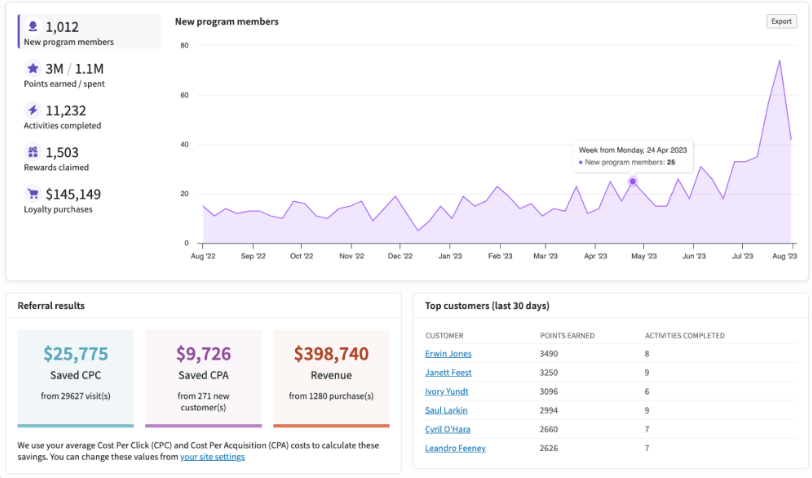
Address the gaps in your data
Even with the most sophisticated data collection, there will be gaps—areas where customer motivations or pain points remain ambiguous. You can fill in these blanks using:
Surveys: Go beyond the standard satisfaction questionnaire — surveys are a good way to ask deeper, more specific questions about customer loyalty. Ask questions like, “What would make you choose us every time?” or “Describe an ideal loyalty program for you.”
Feedback forms: After every loyalty program initiative, actively solicit feedback. Was the rewards redemption process smooth? Were the rewards themselves appealing? Were there technical glitches?
Social media engagement: Beyond promotional posts, use platforms to initiate conversations. Polls, AMAs (Ask Me Anything), and user-generated content campaigns can provide real-time insights.
Loyalty-centric segmentation
With your data analyzed and any gaps plugged, you can segment your audience to better understand what kind of loyalty marketing initiatives will resonate with them (LoyaltyLion can help with this).
Demographics: Recognizing the generational nuances is essential.
Different age brackets, for example, could have unique brand interactions based on their life experiences and cultural contexts.
While older generations might value face-to-face interactions and personalized mail, younger audiences might prefer digital rewards, gamified experiences, or exclusive online events. These demographics-driven insights can shape your loyalty programs.
Psychographics: The motivations, values, interests, and lifestyles of customers can significantly influence loyalty.
Tapping into these psychological insights allows for a more intimate connection, driving emotional loyalty.
If a segment is heavily invested in eco-friendly initiatives, you could provide loyalty bonuses for sustainable practices. Or if a segment values exclusivity, offer early-access sales or limited-edition products to loyalty members.
Behavioral traits: Mapping behaviors gives tangible action points.
Regular interactions, types of purchases, response to campaigns—all these behavioral data points paint a vivid picture.
For a segment that consistently shops in a particular category, offer enhanced loyalty points for related products. If another segment responds well to referral programs, introduce a ‘refer a friend’ campaign with rewards for both the referrer and referee.
Create loyalty-driven personas
Beyond being marketing tools, personas embody the heart and soul of distinct customer segments. They’re not just demographic cut-outs but represent aspirations, habits, preferences, and even challenges.
Take “Engaged Emma” (you may wish to be more imaginative in your naming). Emma shops sustainably, values brand ethics, and actively engages on social media. She’s also keen on sharing her finds with her community. For Emma and her segment, loyalty programs might involve sustainability pledges, exclusive online events, and social media challenges.
To target Emma, you might want to focus your loyalty marketing more heavily on social media, and less on email marketing, a channel she’s less inclined to engage with.
There are lots of ways to push these personas further and turn them into a deeper source of insight. Consider empathy or customer journey maps: what are your personas thinking, feeling, saying, and doing in relation to your brand? Where are their pain points, and what delights them?
Choosing your loyalty marketing channels
With your audience clearly defined, things can get more tactical.
Email marketing:
Email remains one of the most direct and intimate ways to reach out to your customers. Through email marketing, you can deliver carefully personalized content, keeping your brand top-of-mind and deepening customer relationships.
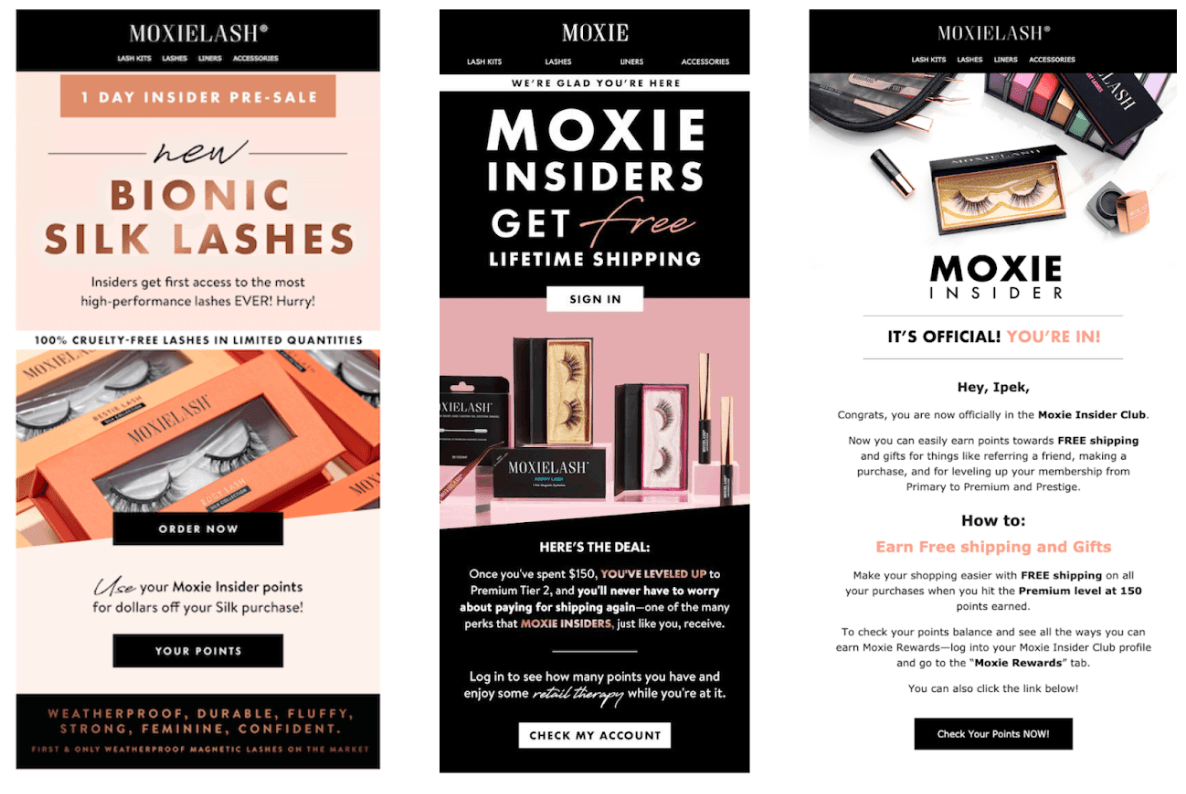
Sephora, for example, uses its vast repository of data to drive personalization. If a customer purchased a particular kind of skincare product, Sephora not only recommends complementary products but also sends out content like ‘how-to-use’ videos or skincare routines, ensuring the customer gets the best use of their purchase.
Airbnb sends out behavior-driven emails. If someone was browsing beach destinations but didn’t finalize a booking, they may receive an email highlighting reviews from other travelers about a particular beach location, emphasizing the experiences they missed out on.
Social media:
Social media’s value is that it offers a two-way communication platform, and your customers’ own social media followings can amplify your messaging exponentially.
Starbucks, for example, makes the most of user-generated content. By reposting a customer’s custom drink creation or their experience in one of their global outlets, Starbucks makes their customers feel seen and appreciated — and encourages others to get involved, too.
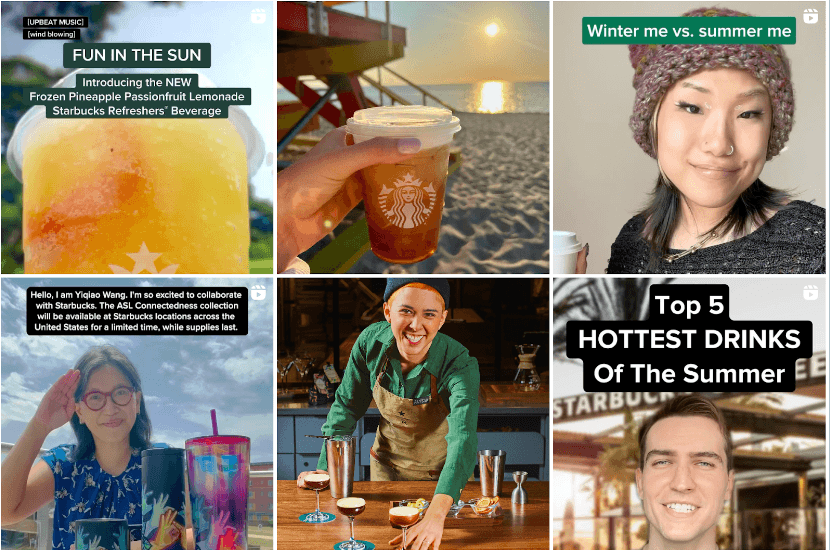
Lego promotes fan-made designs, fostering a sense of community. When customers see their designs acknowledged, it deepens their connection to the brand. Others are encouraged to share and participate, too, driving engagement and loyalty.
Mobile apps:
Mobile apps can be a brand’s gateway into a customer’s daily routine. More than just ecommerce, these apps can be hubs for exclusive content, personalized recommendations, and real-time feedback.
Nike offers its app users exclusive product drops and early access to sales. But beyond that, the app also has workout routines, challenges, and community boards. This integration ensures the user doesn’t only open the app to buy but also to engage and be a part of the Nike community.
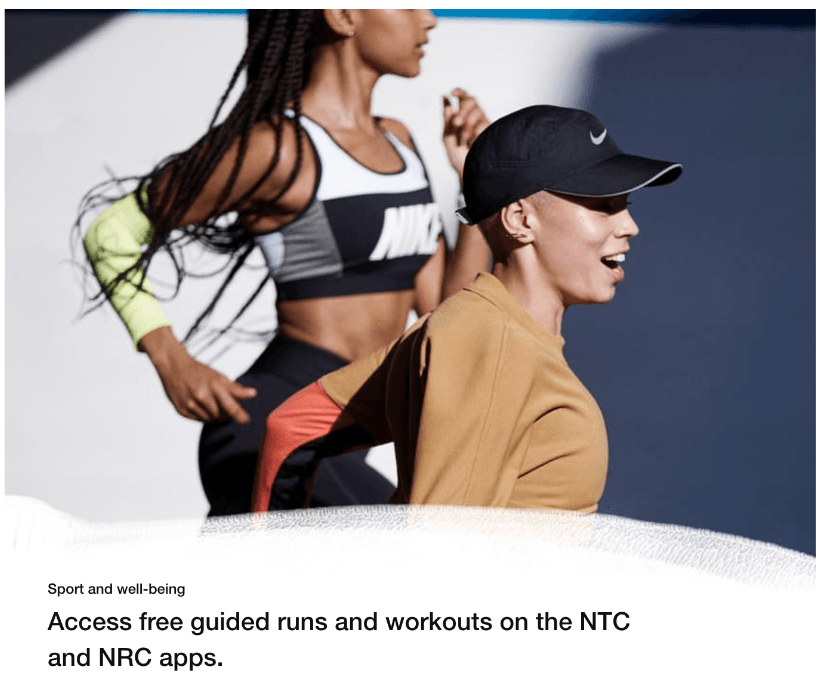
Chick-fil-A’s mobile app is seamlessly integrated with its loyalty program, Chick-fil-A One. Every order through the app gets users points that can be redeemed. This functionality not only drives app usage but also fosters a sense of reward and recognition among customers.
Content marketing:
Through content marketing, you can show off your expertise and values. It helps you build up those loyalty-earning qualities that keep you away from a reliance on race-to-the-bottom pricing differentiation.
Outdoor brand, REI, makes sure its customers are well-prepared for their adventures. Their content isn’t about products but about the experience. How-to guides on setting up tents or choosing the right hiking boots ensure that customers are equipped with knowledge, making them rely on REI for information and, by extension, for products.
Adobe provides tutorials, so that users not only buy their software but also use it effectively. This ongoing relationship, fueled by content, ensures users stick with Adobe products over competitors.
For loyalty marketing, content should be a blend of product-related information and industry-specific knowledge. Ensuring customers see you as an authority in your domain can drive repeat business and advocacy.
Events and experiences:
Physical events, in a world dominated by digital interactions, can offer tangible connections, making them memorable and fostering brand loyalty.
Apple hosts various in-store workshops. These sessions are product-centric, but they’re also educational. Customers don’t just learn about products, they experience them first-hand.
Red Bull might sell energy drinks, but its identity is deeply rooted in adventure and culture. Through music festivals, extreme sports events, and cultural sponsorships, Red Bull customers are loyal to a shared lifestyle, not just a product.
In loyalty marketing, events and experiences should be extensions of the brand’s values. These events, while promoting products, should foremost promote a feeling, a lifestyle, and a community.
Structuring a loyalty program
At the heart of any loyalty marketing strategy is a loyalty program.
There are four main types of loyalty program — points-based, value-based, tiered and subscription-based. Each has its own pros and cons.
Whichever model you go for, a good loyalty program has:
Clearly defined objectives: Before diving into the specifics, establish clear objectives. Are you trying to increase purchase frequency? Or maybe you’re looking to improve your average order value? By understanding the end goal, you can shape the mechanics of the program.
Simplicity: The most successful loyalty programs are those that customers can easily understand. If a customer needs to spend hours deciphering the reward system or the points calculation, they might lose interest. An effective loyalty program has clear rules, easy-to-understand rewards, and a straightforward redemption process.
Engagement beyond purchases: Loyalty isn’t just about purchases. Engage customers by offering points for other activities like writing reviews, referring friends, or sharing on social media. This approach not only boosts engagement but also extends the brand’s reach.
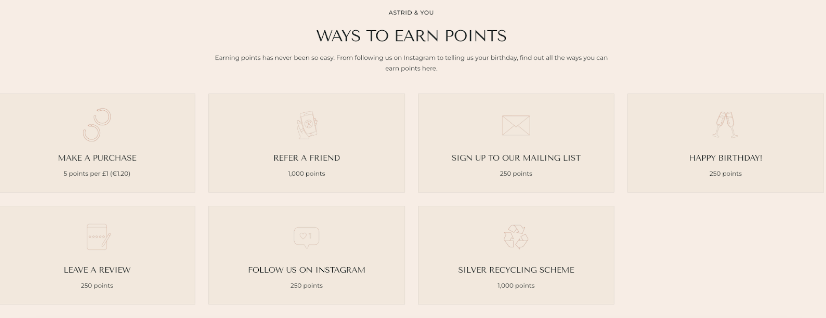
Personalization: Reward and respond to the preferences of your customers. If someone frequently buys skincare products, you could offer them an early-bird discount on new skincare releases.
Exclusivity: A hint of exclusivity can make a customer feel special. Offering early access to sales, sneak peeks of new products, or invites to exclusive events can foster a sense of belonging, driving emotional loyalty.
Regular updates & iterations: A stagnant loyalty program can lose its appeal over time. Regularly updating the rewards, introducing limited-time offers, and occasionally revamping the program based on customer feedback can keep the excitement alive.
Transparent communication: Keep your customers informed about their points, how they can earn more, and what rewards are available. Regular communication through emails, app notifications, or SMS can keep them engaged and remind them of the value they can get out of the program.
Effective feedback loops: Establish a channel for customers to provide feedback on the loyalty program. Listen to their needs and adjust accordingly.
Learn more: 9 Benefits of Loyalty Programs — And How to Get Started With Yours
Loyalty marketing frameworks and models
In the intricate world of customer retention, loyalty marketing frameworks and models offer a strategic blueprint.
Here are a couple to be aware of.
Loyalty Ladder
The Loyalty Ladder concept helps brands visualize customer progression from lead to advocate.
Lead: Lead nurturing is critical. As an example, HubSpot offers free courses on various marketing topics, gradually introducing prospects to their products within those learning paths. This educational-first approach ensures potential customers see value even before the purchase.
Customer: Encouraging the second purchase is essential. Amazon’s recommendation algorithms, which propose additional products based on prior purchases and browsing behaviors, aim to make the customer’s journey continuous.
Loyal Customer: Loyal customers often seek consistency. In-N-Out Burger maintains a simple menu but emphasizes quality ingredients and consistent taste. This focus on delivering the same quality experience fosters preference.
Advocate: Tesla’s referral program incentivizes existing customers to become brand ambassadors, offering benefits like free Supercharging. This converts satisfied customers into active promoters.
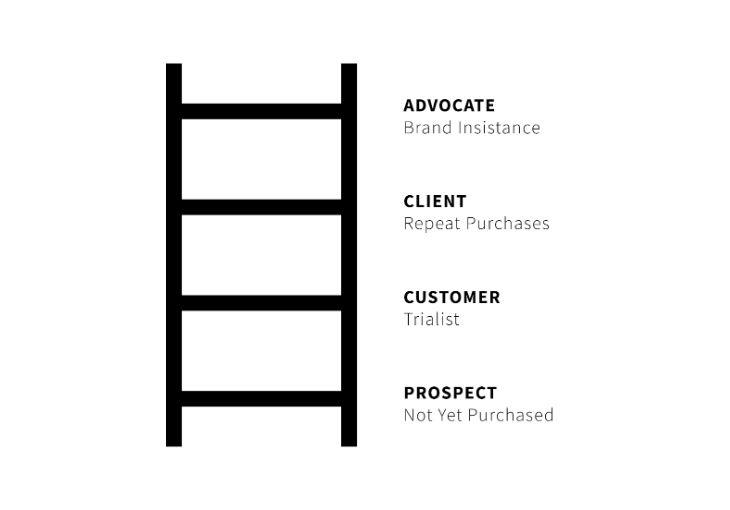
RFM model (Recency, Frequency, Monetary value)
The Recency, Frequency, Monetary (RFM) model segments a company’s customers based on their purchase behavior. It classifies customers based on:
- Recency — how recently a customer made a purchase
- Frequency — how often they purchase
- Monetary Value — how much the customer spends
By categorizing customers using these three metrics, businesses can identify their most valuable customers and tailor their marketing strategies to target them more effectively.
Recency: Email marketing campaigns that target users who haven’t purchased or interacted with the brand in a while, with special offers or showcasing new products, are common strategies.
Frequency: Subscription boxes like Birchbox encourage regular engagement. By offering a personalized selection of new products monthly, they make frequency a core part of their business model.
Monetary Value: Sephora’s tiered rewards system not only incentivizes more spending but ensures frequent buyers feel valued. This system encourages customers to climb the loyalty ladder.
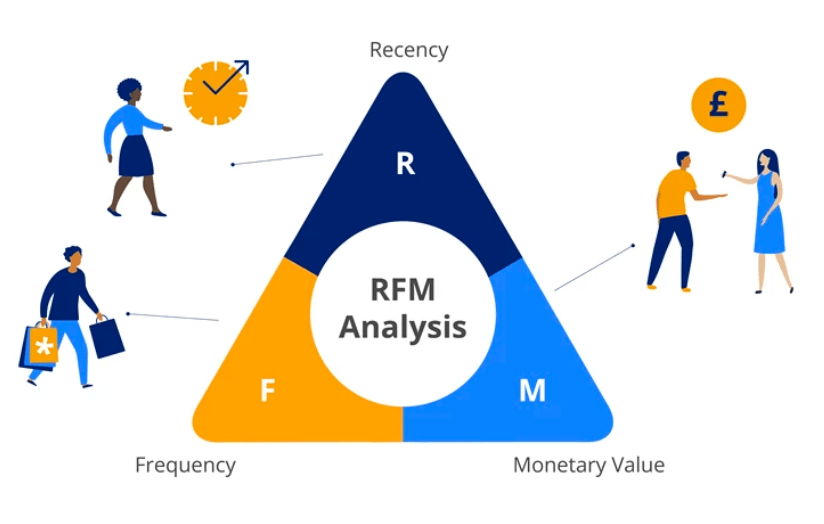
Measuring your loyalty marketing strategy
Customer loyalty can seem a little “fuzzy” as a concept. Loyalty marketing, in particular, requires an astute focus on measurement, not just to justify its existence but to refine and perfect its execution.
This starts with a clear understanding of your aims.
Defining your aims
Before you embark on a journey, you need to know your destination.
Similarly, before implementing any loyalty marketing strategy, you must define your objectives. Are you trying to increase repeat purchases, enhance customer lifetime value, foster brand advocacy, or reduce churn?
Each of these objectives, while interconnected, requires different approaches and results in distinct outcomes.
Defining your aims goes beyond just setting goals — it’s about aligning your strategy with broader business outcomes.
For instance, if your big business objective is to increase profitability, your loyalty marketing aim might be to lift your average transaction value.
Or, if market penetration is your focus, you’d be more concerned about gaining new loyalty program members.
Start with broader business goals: Your loyalty marketing objectives should be an extension of your broader business goals. Whether it’s market expansion, increased profitability, or brand recognition, ensure your loyalty objectives align with these broader aspirations.
Research your customers: Dive deep into your customer data. What do they value? Why do they come back? Understanding their motivations and behaviors will guide your objectives.
Gap analysis: Evaluate your current loyalty initiatives, if you’ve got any. Where are the gaps? Are customers dropping off after their first purchase? Is there a segment of loyal customers that isn’t being adequately rewarded.
Benchmarking: Look at competitors or businesses in similar industries. What are their loyalty program benchmarks? You’ll need your own strategy, of course, but industry standards can be a good reference point.
Iterate and refine: Defining your aims isn’t a one-time exercise. As your business evolves, so will your objectives. Regularly revisit and refine them based on changing business landscapes, customer feedback, and market trends.
Loyalty marketing metrics
Average order value
Average order value (AOV) is the average amount a customer spends per transaction. To calculate it, divide total revenue by the number of orders.
An effective loyalty program should incentivize customers to spend more each time they shop. So, naturally, you’d expect to see your AOV increase under a successful program.
AOV = Total Revenue / Number of Orders
Purchase frequency
A good loyalty program motivates customers to shop more frequently to accumulate rewards.
If customers are making purchases more often after the introduction of your loyalty program, things are going in the right direction.
Calculate purchase frequency (PF) by dividing the total number of purchases by the number of unique customers over a certain time period.
PF = Total Number of Purchases / Number of Unique Customers
Customer lifetime value
Customer lifetime value (CLV) is the total revenue you can expect from a customer throughout their relationship with your business.
Since loyalty programs should improve retention and increase the frequency and value of purchases, you’d expect the CLV of customers taking part in your loyalty program to be higher than the CLV of those who aren’t.
Calculating CLV can be a bit more complex, because it involves several factors like average purchase value and frequency rate, and average customer lifespan. A simplified version of the formula is:
CLV = Average Purchase Value x Purchase Frequency x Average Customer Lifespan
Revenue and new customers from word of mouth
Brand advocacy
One of the significant benefits of loyalty programs is transforming customers into brand advocates. Using referral codes or unique tracking links will help you see how much additional revenue is generated from referrals.
There’s no single formula for calculating the monetary value of this brand advocacy, but you could go with something like:
Word of Mouth Revenue = Number of Referred Customers x Average Purchase Value
Redemption rates
Redemption rates measure the percentage of customers who redeem the rewards they’ve earned through your loyalty program.
Redeemed rewards often mean more purchases, so if your program has a low redemption rate, it might mean your rewards aren’t appealing enough or the redemption process is too complicated.
Redemption rates are calculated by dividing the number of rewards redeemed by the number of rewards earned. This is usually expressed as a percentage.
Redemption Rate (%) = (Number of Rewards Redeemed / Number of Rewards Earned) x 100
Program engagement
Customers who value a loyalty program are more likely to engage with it – regularly checking their points balance, redeeming rewards, and participating in program-related promotions. The higher their engagement, the more likely they are to make more purchases.
Program Engagement (%) = (Number of Active Customers / Total Number of Customers) x 100
Customer churn rate
Customer churn rate refers to the percentage of customers who stop doing business with you during a given period.
A successful loyalty program should increase customer retention, so you should see your churn rate decrease.
Churn Rate (%) = (Number of Customers at Start of Period – Number of Customers at End of Period) / Number of Customers at Start of Period x 100
Are you ready to use loyalty marketing to your advantage?
Loyalty marketing is crucial to developing long-term relationships with customers who spend more with you.
With loyalty program members generating between 12 and 18% more revenue per year than the average guest shopper, it’s no wonder so many brands are investigating how to leverage loyalty to their advantage. If you want to do the same, book a demo with one of our specialists.





